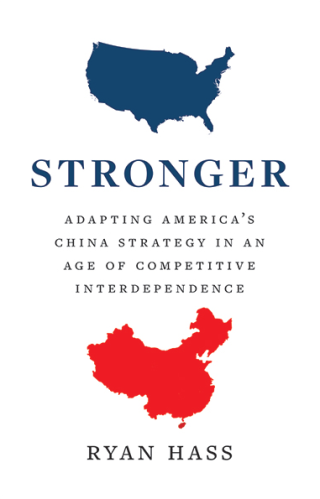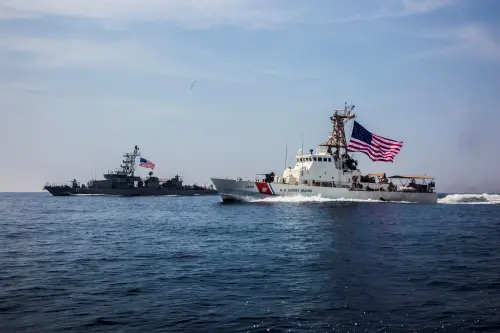The recent deployment of four Chinese People’s Liberation Army Navy (PLAN) ships to the waters off Alaska’s Aleutian Islands further highlights the growing chessboard of naval operations in the Pacific. The message from China was clear — that they maintain the ability to strategically challenge the United States homeland and that their naval operations are increasingly capable of long-range sustained deployments. We should not, however, assume that this message is meant for the U.S. alone, nor assume that this is only a tit-for-tat in response to U.S. freedom of navigation operations in the South China Sea. As Elizabeth Buchanan, a lecturer in strategic studies at Deakin University in Australia, told Arctic Today in a recent interview, this may be a signal to Russia as well as the U.S. that Chinese access to the Arctic is not negotiable.
This is not the first time that PLAN vessels have deployed to the Alaskan coast; a similar deployment occurred in 2015. Explaining its Arctic ambitions in a 2018 white paper, Beijing highlighted the importance of access to the region, stating, “The utilization of sea routes and exploration and development of the resources in the Arctic may have a huge impact on the energy strategy and economic development of China, which is a major trading nation and energy consumer in the world.” In other words, they expect unfettered access to the region. Rush Doshi, Alexis Dale-Huang, and Gaoqi Zhang’s recent comprehensive Brookings report on China’s Arctic ambitions puts it best: “China sees itself not only as having interests in the Arctic but also as being on course — over the period from 2015 to 2030 — to become a ‘polar great power.’” For that, the Bering Strait is essential.
With only 51 miles separating the eastern tip of mainland Russia and the western tip of mainland Alaska, with a scattering of U.S. and Russian islands in-between, the Bering Strait is an overlooked choke point in the world’s oceans. One must pass through it to access the so-called “Northern Sea Route” passage across Russia’s northern coast, to access the Canadian Northwest Passage, or merely to chase lucrative fish stocks as they migrate further north in search of cooler waters in a warming climate. All of these economic issues are key to China’s Arctic ambitions and yet make them vulnerable to Russian and U.S. actions. While Russia maintains close ties to China, it appears reluctant to accommodate the Arctic ambitions of a non-Arctic power. The idea that the Arctic should be governed by Arctic states is a small sliver of U.S.-Russian like-mindedness. Both the U.S. and Russia have touted the Arctic Council as the premiere forum for intergovernmental cooperation among Arctic states and were instrumental in delaying Chinese observer status from 2007 to 2013. These realities may not sit well with Chinese military planners.
International law guarantees the right of transit passage to ships of all nations through these types of straits, but it is no surprise that seafaring nations have been wary that this right will always be upheld by littoral strategic competitors (see the Straits of Hormuz, forming a chokepoint to the Persian Gulf that gives Iran constant leverage to threaten global energy supplies and allied forces in the region). Demonstrating PLAN ability to easily deploy to the region to assist a Chinese ship’s passage or respond to provocations from the United States or Russia may be a key part of the Aleutian visit. It is likely not a coincidence that the Chinese polar research icebreaker, Xuelong 2, was also deployed in the Arctic, just north of Alaska, and transited the Bering Strait on its way home around the same time of this deployment.
Ironically, it is the very same international law, embodied in the United Nations Convention on the Law of the Sea (UNCLOS), that guarantees China’s rights to conduct no-notice transits of the Bering Strait that they seem so ready to undermine in the South China Sea. For its part, the United States should welcome the exercise of transit passage by Chinese vessels or even the Chinese navy in the Bering Sea, as it may be useful as a tool to remind Beijing of the importance of the international law of the sea. Though the U.S. is not a party to UNCLOS, it has accepted most of its provisions relating to the traditional uses of the sea as customary international law and abides by them. There is widespread agreement among U.S. military and public policy leaders that the U.S. should accede to UNCLOS, giving us greater leverage to shape this important body of international law and provide a stronger basis for our robust freedom of navigation program. But in the meantime, we need not sacrifice the opportunity to remind Beijing of the importance of navigational rights and freedoms beyond the South China Sea.
We can, and certainly should, continue to monitor and shadow these deployments near the U.S. homeland, but we gain far more advantage from upholding the international order in the face of Chinese provocation. As China continues its moves towards great naval power, the law of the sea will become more critical to their freedom of movement and access than their short-sighted actions in the South China Sea reflect.
The Brookings Institution is committed to quality, independence, and impact.
We are supported by a diverse array of funders. In line with our values and policies, each Brookings publication represents the sole views of its author(s).










Commentary
Is China worried about an Arctic choke point?
September 22, 2021